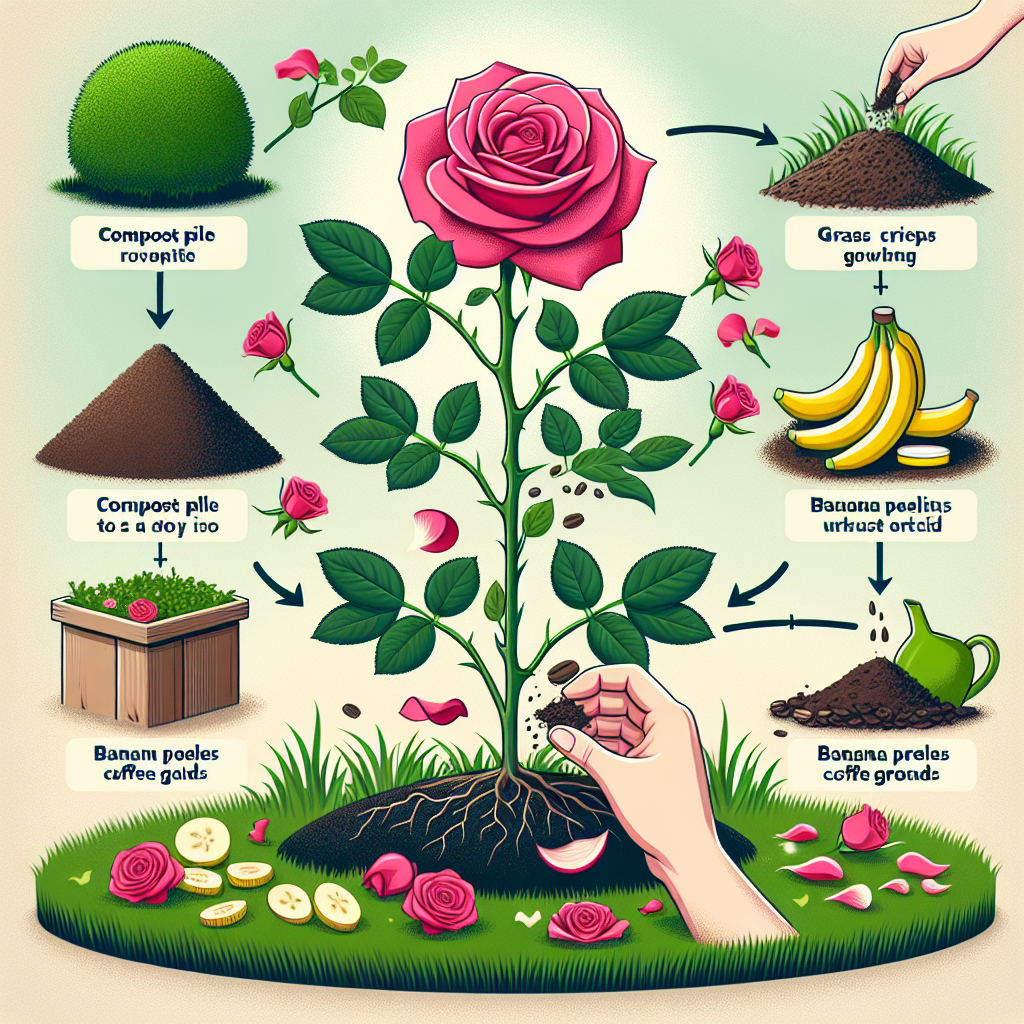
How to feed roses naturally
How to Feed Roses Naturally: A Comprehensive Guide
Roses are renowned for their beauty and fragrance, but nurturing them to their fullest potential requires the right care, especially when it comes to nutrition. Understanding how to feed roses naturally can make a significant difference in their health, vibrancy, and bloom quality. Natural feeding not only promotes robust growth but is also kind to the environment. In this guide, we'll explore the various methods to nourish your roses organically, ensuring they flourish year after year.
The Importance of Feeding Roses Naturally
Feeding roses naturally is vital for several reasons:
- Soil Health: Natural fertilizers improve the soil structure and increase the presence of beneficial microorganisms.
- Plant Health: Organic nutrients reduce the risk of chemical burns and toxicity to the plants.
- Biodiversity: Natural feeding methods support a diverse ecosystem in your garden.
- Flavor and Aroma: Roses fed with natural foods often exhibit richer fragrances and deeper colors, enhancing their overall appeal.
Understanding Rose Nutritional Needs
Before diving into specific feeding techniques, it’s essential to understand what nutrients roses require:
- Nitrogen: Crucial for leafy growth and overall plant health.
- Phosphorus: Necessary for strong root development and flower production.
- Potassium: Aids in disease resistance and improves blooming.
- Micronutrients: Essential elements like magnesium, calcium, and iron enhance photosynthesis and overall health.
Natural Feeding Methods for Roses
Now that we understand the importance and requirements, let’s delve into different methods for naturally feeding roses.
1. Compost
One of the best ways to feed roses naturally is by using compost. Compost enriches the soil with a balanced diet of nutrients, improves soil structure, and increases moisture retention.
- Gather materials: Collect kitchen scraps (such as vegetable peels), yard waste (like grass clippings), and brown materials (like dried leaves).
- Build your compost pile: Layer your green and brown materials for optimal aeration and decomposition.
- Turn the pile: Every few weeks, turn the compost to allow oxygen in and encourage even decomposition.
- Application: Once compost is ready, top-dress around the base of your roses or mix it into the soil during early spring.
2. Organic Mulches
Using organic mulches not only suppresses weeds but also provides a slow release of nutrients as it decomposes.
- Types of organic mulches:
- Bark chips
- Straw
- Wood shavings
- Leaf mold
Lay 2-3 inches of mulch around your roses, making sure to keep it a few inches away from the plant stems to prevent rot.
3. Natural Fertilizers
Several natural fertilizers can provide specific nutrients beneficial to roses. Here are a few common options:
- Bone Meal: A great source of phosphorus for root and flower growth. It should be mixed into the soil in early spring.
- Fish Emulsion: A liquid fertilizer that’s high in nitrogen. Dilute it with water and apply during the growing season.
- Wood Ash: Contains potassium, beneficial for blooming. Use it sparingly, as it can raise soil pH.
- Comfrey Tea: A nutrient-rich liquid fertilizer made by steeping comfrey leaves in water. Use it once a month for a nutrient boost.
4. Homemade Fertilizer Recipes
If you’re looking to get a bit crafty, consider creating your own organic fertilizer using simple household ingredients.
- Brewed Banana Peel Tea:
Banana peels are rich in potassium.
- Chop banana peels and soak them in water for a few days.
- Strain the mixture and use the liquid to water your roses.
- Eggshell Fertilizer:
Rich in calcium, eggshells can help strengthen plants.
- Wash and dry the eggshells.
- Crush them into a powder and mix into the soil at the base of the roses.
5. Epsom Salt
Epsom salt, containing magnesium sulfate, can help improve blooming and overall health of rose plants.
- Application: Dissolve 1-2 tablespoons in a gallon of water and apply it to the soil every month during the growing season.
- Soil test: Before applying, it's wise to conduct a soil test to check if magnesium is already present in adequate amounts.
Timing and Frequency of Feeding
Understanding the right time and frequency for feeding your roses is as crucial as the method you choose.
- Early Spring: Begin feeding your roses when new growth emerges.
- Mid-Season: Apply additional organic fertilizer after the first round of blooming to encourage more blooms.
- Late Summer: Feed with compost or mulching to ensure roses build strength before winter.
Signs Your Roses Need Nutrients
Recognizing the signs of nutrient deficiency in roses is essential for timely intervention:
- Pale Leaves: Suggests nitrogen deficiency.
- Stunted Growth: Indicates a lack of essential nutrients.
- Small or Faded Blooms: May point to nutrient imbalance, particularly low phosphorus or potassium.
- Leaf Drop: Can suggest over-fertilization or nutrient burn.
Conclusion
Feeding roses naturally provides numerous benefits, enhancing not only the health and beauty of your plants but also supporting the surrounding ecosystem. By utilizing compost, organic fertilizers, homemade solutions, and applying them at appropriate intervals, you can thrive in your rose gardening endeavors. Always observe your roses for any signs of deficiency and adjust your feeding practices as necessary. With a bit of patience and care, your roses will reward you with stunning blooms and glorious fragrances.
“Roses are not just flowers; they're tests of our gardening skills, waiting to reward us for our nurturing.”
Happy gardening, and enjoy the beauty of your naturally fed roses!
By Guest, Published on August 23rd, 2024